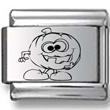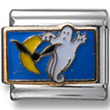G.D. Barche. Interpreting Literature: A Myth and a Reality.
(Bareilly: Prakash Book Depot, 2008).
Pages 197, Price Rs. 175/-.
ISBN 978-81-7977-269-0
Interpreting a text is a knotty affair, from impressionistic, didactic, moralistic, humanistic or spiritualistic to mythic, modernist, structuralist, postmodernist, diasporic, pragmatic, etc. G.D. Barche is aware of the pitfalls of various critical approaches and theories, as he tries to locate the meaning of various literary texts. He recognizes the significance of the writer's language in context.
Stylistics, with its armoury of analytical weapons, gives importance to form and exposes how something is expressed. One cannot do a stylistic analysis of a poem or fiction without some basic knowledge of linguistics, structuralism and poststructuralism; grammatical categories such as nouns, verbs, adjectives, adverbs etc, and noun phrases, verb phrases, clauses, collocations etc; syntax, diction, and vocabulary; metaphor, sound and prosody features etc (in poetry); and point-of-view and speech and thought presentation, understanding of the function of speech and dialogue (in fictional narratives); textual and rhetorical aspects - formal description, meditative reflection and metonymic dimension of style.
While the text's intrinsic linguistic meaning or formal properties are basic to Barche's understanding, he applies certain extrinsic contextual factors that are taken to affect the meaning of language in discourse. He effectively demonstrates how pragmatic meaning, for example, can complement semantic meaning, as he draws on ideas and experiences outside the text to formulate his interpretation. The process of his interpretation rests on cues in the text which have a different significance, or are significant to a different extent.
Barche's book does not deal with stylistics as a discipline, rather it provides stylistic analyses of about 35 poems, 20 novels, and two plays. The focus of his analysis is not so much on analysis of the text itself but on analysis of the factors determining the meaning of a text in its social and spiritual context. His discourse-analytical approach to style in literary works is positioned against Patanjali's Yoga Sutras, the Upanishads, the Bhagwad Gita, concepts such as klesa and citta-vrittis; layers of consciousness and ideals of detachment, freedom, love and self; myths of sin, fall, and suffering; symbols of Shikhandi, Sisyphus, Phoenix and Icarus, Adam and Eve, Purnima and Amavasya etc; and ironies, ambiguities and existential dilemmas that control the text or relate it to different contexts.
Throughout the 26 essays, composed to demonstrate how the written words relate to what is really meant, there is an intuitive presence of Patanjali's citta-vrittis and the various Upanishads that are the contexts of Barche's interpretations. He also regards the reader's autonomy vis-à-vis the text, and begins with an example of the reading and interpretation of Arun Kolatkar's 'Makarand', drawing our attention to what is known as the 'schema' theory. However, he quotes H.G. Widdowson to caution that given the unspecific and ambiguous poetic meanings, "there is no such thing as a definitive interpretation."
In his detailed analysis of a couple of poems by Kamala Das, Barche notes that the poet effectively gives vent to her "implicit or explicit anger" caused by klesas and nourished by viparyaya vritti. He also compares some of her poems with those of Sylvia Plath, who is equally experientially deep and psychologically complex but a victim of the viparyaya vritti which accounts for her deep-seated anger, pain and sufferings.
In another essay, Barche examines the 'Sun motif' in about twenty post-independent poets who show a secular rather than religious interest in the Sun. He also deals with Sunita Jain's poetry to reflect on the 'coupling' complex, i.e. convergence of physical, mental, emotional, and positional elements in man-woman relationship. In yet another essay he demonstrates the rejuvenating ('Phoenix') aspects as against the depleting ('Icarus') aspects of sex a la the Chandogya Upanisad's 'Vamdevya Chant' (Udgitha-Pratihara-Nidhana) in R.K.Singh's erotic poetry.
Among the words of fiction, Barche explores the built-in Nature-Culture forces in the protagonists of Arun Joshi's The Strange Case of Billy Biswas and Nguigi Wa Thiongo's The River Between. He creates the stylistic context for acquiring the tyaga vritti for 'nitya' (as against 'anitya') for everlasting blissful state.
His study of Anita Deasi's Bye Bye Black Bird and Arun Joshi's The Strange Case of Billy Biswas shows the process of alienation and rehabilitation via a 3-tier operation, viz. construction, deconstruction and reconstruction. If the characters in the two novels fail to experience rest and joy, it is because do not accept the Upanishadic truth that a man's destiny is to keep journeying non-stop.
Barche's approach enables him to deconstruct the deconstruction in Arundhati Roy's The God of Small Things to help grasp the 'why and how' of things that happen in "ever puzzling and peculiar ways in this world." He also examines facets of feminism in Indian English fiction, concentrating on Shashi Deshpande's Roots and Shadows, Anita Desai's Cry, the Peacock, and Jai Nimbkar's Temporary Answers and highlights the paradoxical position of Indian women.
He studies Manohar Malgonkar's The Men Who Killed Gandhi to reflect on existential ironies; Bapsi Sidhwa's An American Brat and Ruth Praver Jhabwala's Heat and Dust to highlight the psychological processes and underlying causes that bring about transformation in one's life; Shobha De's Second Thoughts to understand the feeings of emptiness of a woman amidst plenty, recreating the myth of Fall; R.K. Narayan's The Guide to follow the moral import of the character of Marco as woven in the themes and caught in the tragic human situations without excluding ironies, ambiguities and moral dilemmas of the freedom to choose; and Graham Greene's A Burnt-out Case to map the character of Querry in terms of our layers of consciousness, viz. kali, dvapar, treita and krutam. He also looks at the suggestive and symbolic instances in The God of Small Things ; the Shikhandi symbol as reworked in Shashi Tharoor's Riot, and the expression of Patanjali's avidya in Taslima Nasrin's Lajja/Shame.
The last two essays of the book concern the study of Shakespeare's Othello with a vritti approach and the study of Girish Karnad's Tughlaq with an abhinivesa approach. The former explores the cause of Othello's fall and suffering in terms of Patanjali's five citta vrittis, viz. Pramana (right knowledge), Viparyaya (false knowledge), vikalpa (imagination), nidra (sleep) and smruti (memory), and the associated painful (klista) as well as painless (aklista) vrittis. He views Othello's citta (consciousness) invariably occupied in varying degrees by one vritti or the other but chiefly by pramana vritti, which results in desolation and death.
The latter essay applies Patanjali's psychology to explore the failure and consequent sorrow of Tughlaq, a historical character as conceived by Karnad. Barche, instead of blaming Tughlaq for his impatience, impulsiveness, lunacy, or overconfidence, locates a very different factor-abhinivesa-a klesa, a deep-seated passion, which makes the Sultan act in one direction and is instrumental for dragging him down from an efflorescent state to a miserable one in life.
Barche's Interpreting Literature: A Myth and a Reality, nicely printed and attractively gotup, with its enlightening articles on contemporary poetry (09), fiction (15) and drama (02), all stylistically linked to Patanjali's psychology for various interpretations, is a major contribution to Indian English Literary criticism. He is original in the sense he adds God-dimension to the triad of writer, reader and text and is keen-sighted. His interpretations may not be the same as the original authors' or other readers' but he is convincing.
Barche's qualitative and emotive approach should help enhance our thinking and feeling about the language and form of the texts he discusses just as his critique should help us appreciate "the man who suffers and the mind which creates" on a broader basis. Serious researchers, college and university teachers and postgraduate students should find the book motivating and useful in their literary and stylistic understanding.
Dr.R.K. Singh, Professor & Head, Dept of Humanities & Social Sciences, Indian School of Mines University, Dhanbad 826004, India
Ram Krishna Singh











